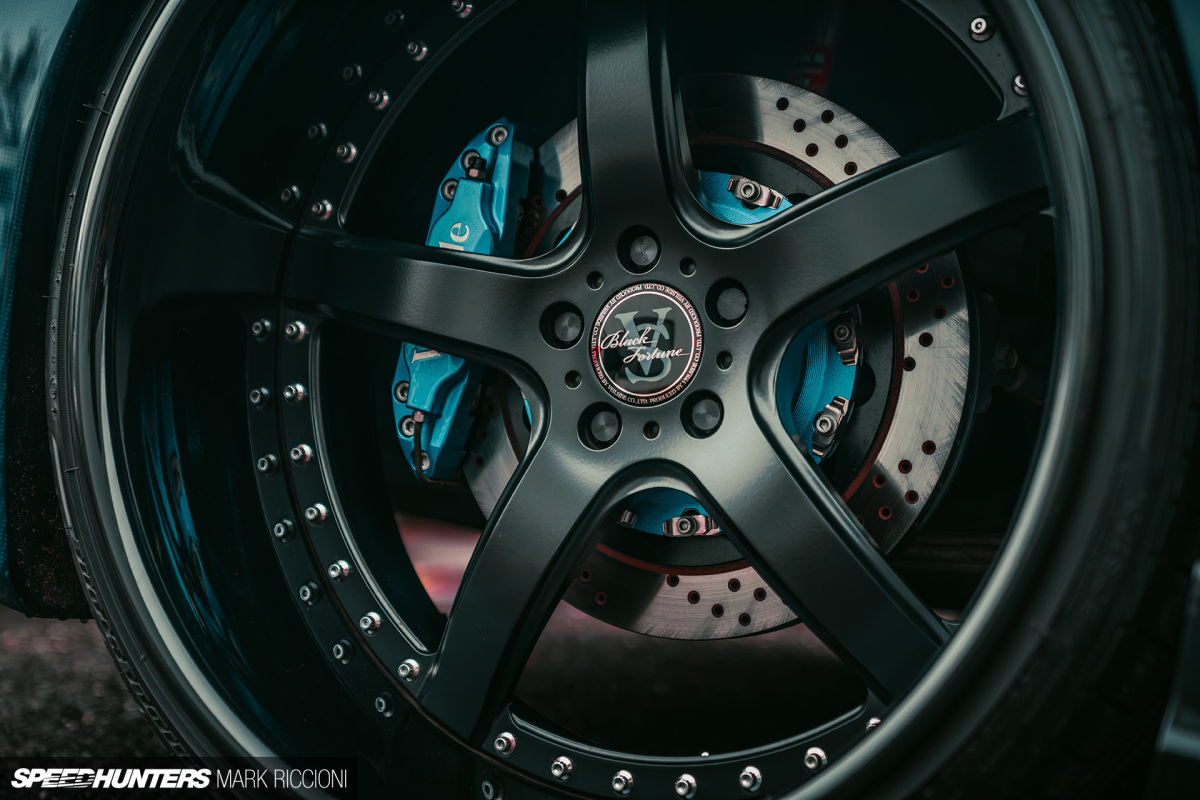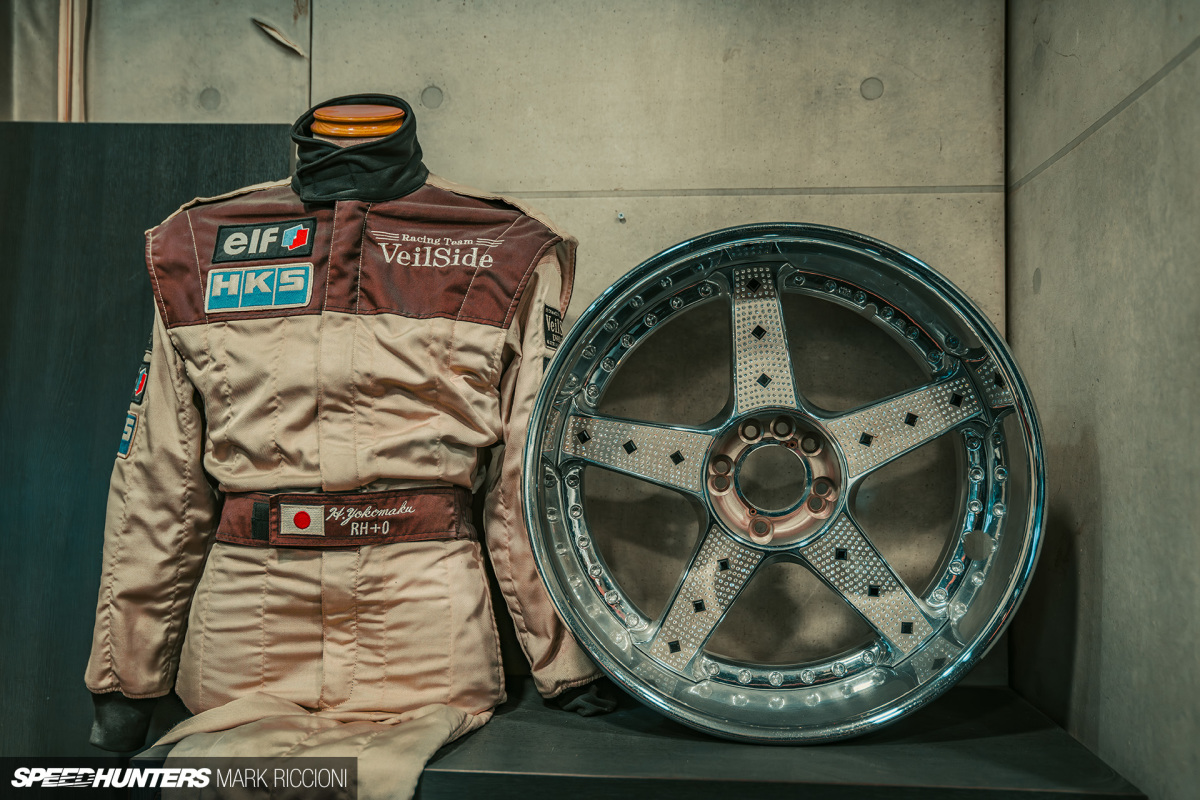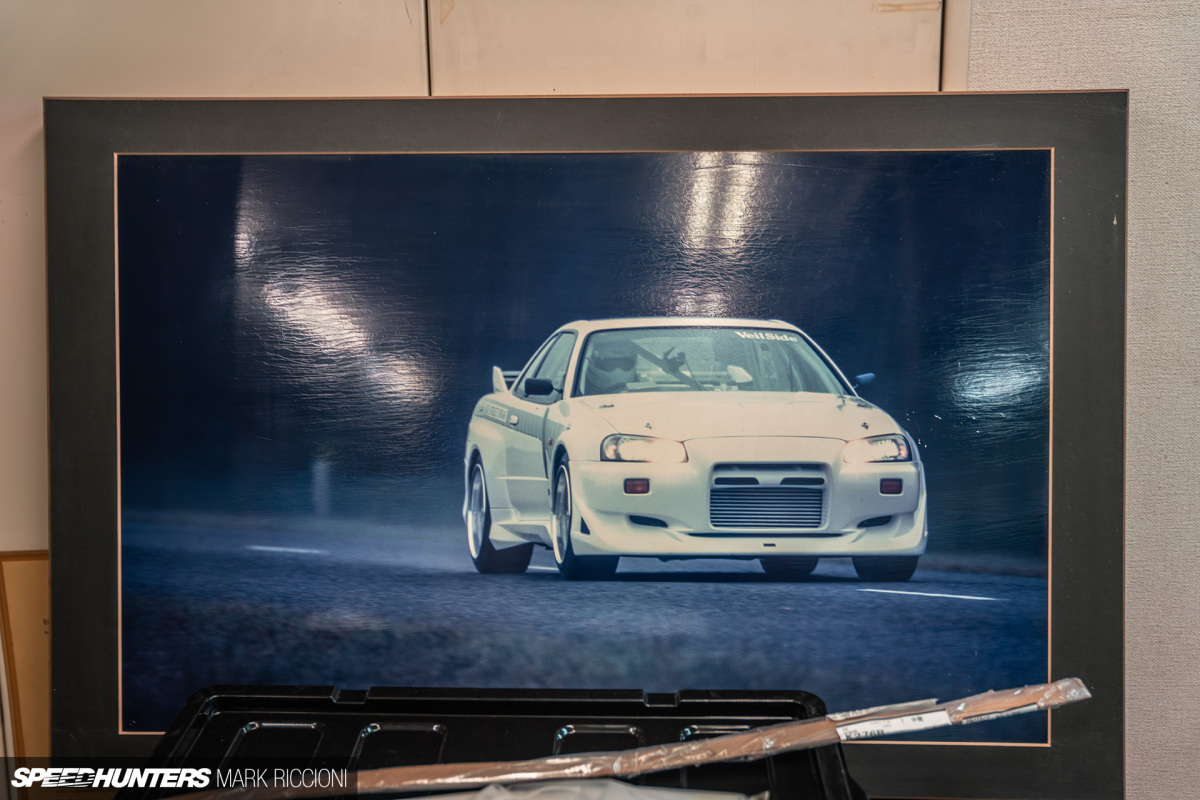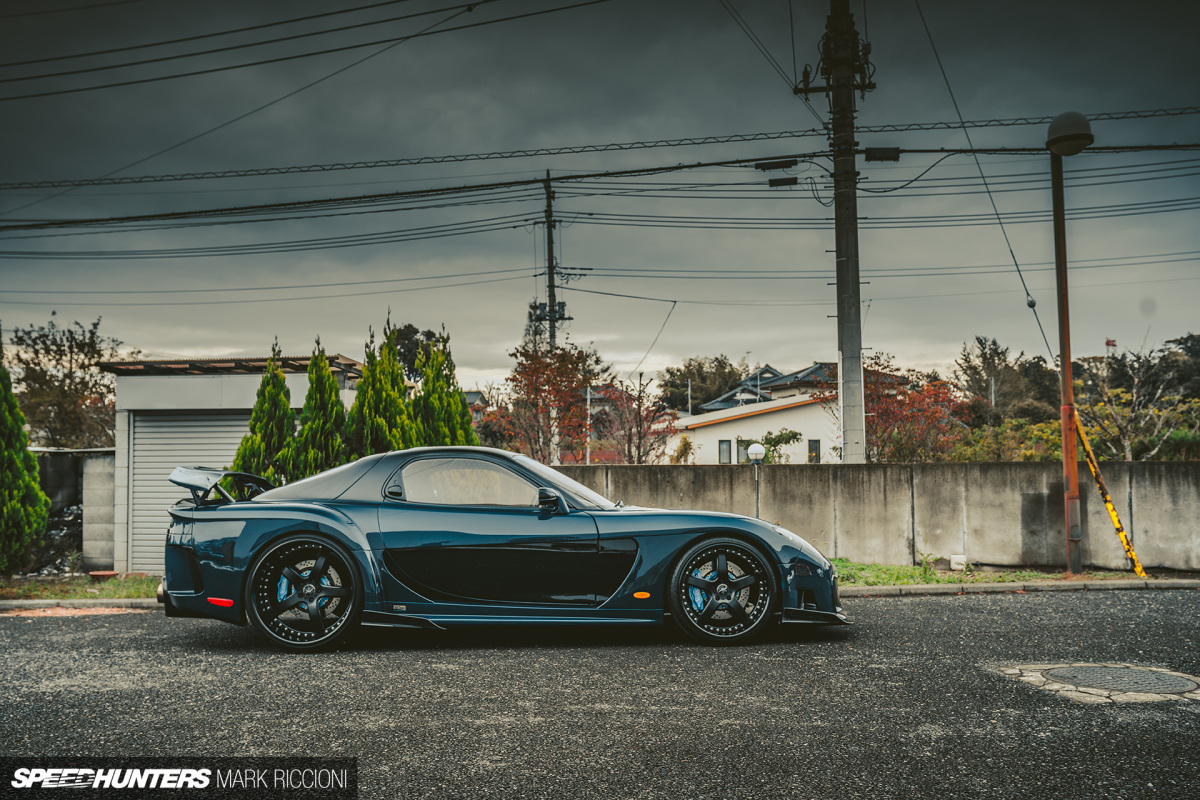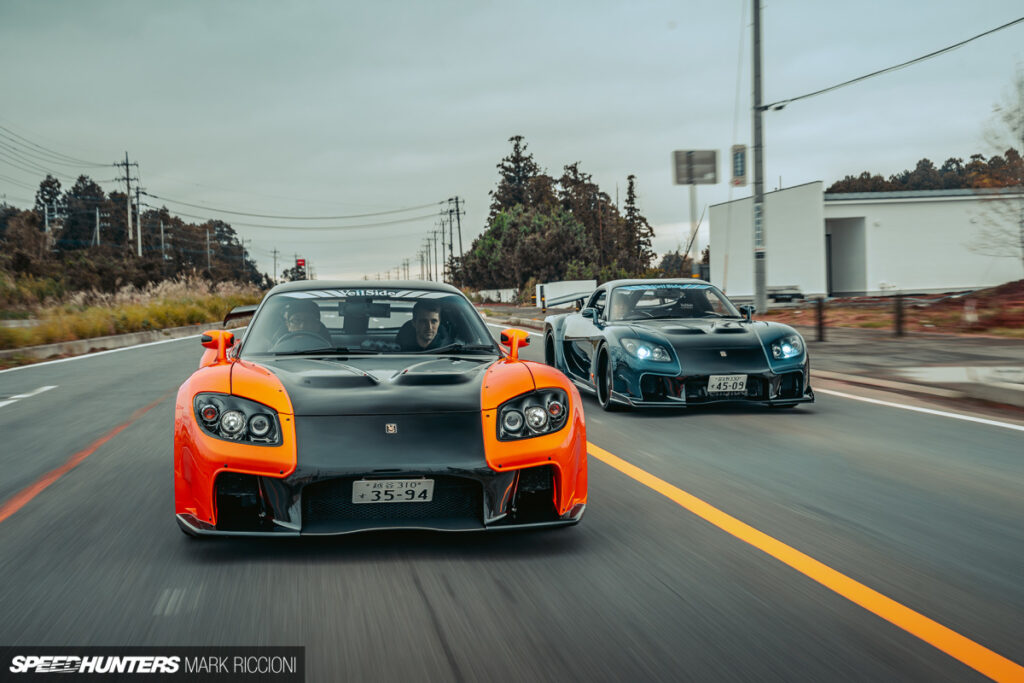
Step into the world of JDM in cars with Hironao Yokomaku of VeilSide! Discover the legendary designs, tuning secrets, and the impact of VeilSide on Japanese car culture. Read more in just 5 minutes!
JDM in Cars: The Untold Story of VeilSide’s Genius, Hironao Yokomaku!
When Hironao Yokomaku began working at a French restaurant at age 16, little did he know how much he’d influence Japan’s car culture in the decades of depth working with JDM in car legends.
Now aged 63, the Tsukuba-based tuner shows no signs of slowing down, having just unveiled a new project alongside Fast & Furious actor Sung Kang at this year’s Tokyo Auto Salon. For nearly four decades, Yokomaku-san has led the iconic Japanese tuning brand VeilSide.
Many younger readers will be familiar with VeilSide’s work in The Fast and the Furious: Tokyo Drift. Almost 20 years on, Han’s orange and black Mazda RX-7 remains a poster car for the entire film franchise. But long before Hollywood thrust VeilSide into the spotlight, it had established itself as one of Japan’s most advanced tuners, building the country’s fastest cars with exteriors almost as loud as their exhausts. Something Speedhunters has covered in the past here.

VeilSide’s distinctive look was originally inspired by the George Barris-designed 1960s Batmobile of all things – a car Yokomaku-san first set eyes on while visiting an amusement in Los Angeles. Now it’s synonymous with 1990s and ’00s Japanese car culture – think huge, sculpted rear wings and curved, ankle-breaking splitters.

During this time, Yokomaku-san wanted to create cars that he felt were ‘complete’ packages, as opposed to focusing on a single element, as most Japanese tuners at the time were doing. But a VeilSide car needed blistering performance, sharpened handling, and bespoke aero before it could ever wear the hallowed ‘Fortune’ or ‘Combat’ name, depending on the level of work involved.

The look didn’t just inspire other Japanese tuners; it even crossed continents, with VeilSide-style body kits being adapted on European cars during the Max Power era, especially in the early 2000s. Everyone wanted a piece of the VeilSide pie. And while the good times felt like a perpetual party, the difficult times that followed brought the company to the brink of collapse.
Now, with VeilSide enjoying a resurgence in 2025, Yokomaku-san is keen to remind the world of VeilSide’s 35-year-long history.

“At first, I started riding around on customized motorbikes, and of course, I thought mine was the fastest,” Yokomaku-san explains. ” But one day I raced against a machine with a fully tuned engine in a Nissan Bluebird and lost easily. That’s when I knew my tuning life had started. When I began driving at 18, I immediately got a job at a car shop to feed my obsession with speed.”

Car tuning in the 1980s wasn’t exactly the behemoth it is today. As the owner of an S30 Nissan Fairlady Z set up for drag racing, Yokomaku-san tuned its engine by trial and error, leading to many rebuilds. By the age of 22, he’d honed his craft enough to establish his own business – Yokomaku Racing Service – working tirelessly to build the fastest S30 in Japan. His pièce de resistance was to turbocharge Nissan’s L-series engine, which immediately led to more victories while competing in zero-yon (0-400m) competitions. Then, a year later, he turned his attention towards the new Nissan Skyline R32 GT-R.

At the age of 28, Yokomaku-san was beating established tuners in just about every discipline. Keen to showcase his skills beyond simply going fast, Yokomaku Racing Service became VeilSide – a name based on an English translation of his family name – ‘Yoko’ meaning side and ‘maku’ meaning veil.

“Between 1990 and 1990, I set many Japanese records including top speed, drag racing, and the fastest 0-300km/h time of 13.72 seconds in our R-1 Street Drag R32 Skyline GT-R,” Yokomaku-san adds. “Our cars were very distinctive, but also the fastest, so many requests for engine tuning came from owners across Japan. But before long, I was reminded of the dangers of tuning after frequent accidents in tuned cars occurred across Japan. I did not want this to happen, so I decided to create a car that could attract people’s attention without running at crazy speeds. After winning awards at Tokyo Auto Salon for many years, the VeilSide cars and look became very popular.”

While the Tokyo Drift RX-7 might be VeilSide’s most recognized Fast & Furious car, the company’s aero kits have been present in every one of the franchise’s films since day one. Remember Dominic Toretto’s red Mazda RX-7 in the original movie? That’s Veilside. Oh, and Suki’s pink Honda S2000 from 2 Fast 2 Furious? Yes, that’s one too.

The Rise and Challenges of JDM in Cars: VeilSide’s Struggle with Popularity
Unfortunately for Yokomaku-san, this popularity led to an overwhelming demand, which left VeilSide unable to maintain supply. Before long, cheap replica kits flooded the international market, and as the tuning industry slumped in the mid-2000s, VeilSide found itself in a bad financial way.
“I wanted to create a car that could attract attention even while not running, which is where the idea for the Combat Supra came from” he explains. “I was honored to win the Complete Car Grand Prix at the 1993 Tokyo Auto Salon as well as the Dress-up Car Grand Prix and the Best Tuner Grand Prix. VeilSide‘s 3D-modelled aero parts became popular all over Japan. As a result of all of this, the supply could not keep up with the overwhelming demand. It was very difficult to increase the number of molds and staff to produce aero parts and increase supply to meet demand. We had also increased the number of product items such as aluminum wheels, mufflers, engine parts, and suspension too.”

“During this time, VeilSide moved away from the spotlight with a focus on survival,” Yokomaku-san adds. “Many manufacturers went bankrupt and the custom industry was in a slump. VeilSide was also affected by the collapse of this bubble, as subcontractors went bankrupt one after another. It wasn’t until Tokyo Drift made a big impact all over the world that people began to remember VeilSide and expose a new generation to our designs. I first learned about the Nissan L-type engine at Yokomaku Racing Service, and then tuned GT-Rs and Supras with VeilSide before moving into the aero parts and appearing in films. To remind a new generation of car fans about VeilSide’s history was a good feeling.”

With a final installment of the Fast and Furious franchise set to arrive in 2026, Yokomaku-san hopes his legacy will continue to inspire future generations after him.
“People ask me why I started VeilSide, and I think it was the many bitter experiences I faced as an enthusiast and tuner that led to the establishment of the brand. I had a vision that others did not offer, and it has been a privilege to make these dreams a reality through VeilSide. The future of custom car culture is always uncertain. But what I do know now at 63 years old is that VeilSide makes cars for enthusiasts – whether that is a few or a lot. For this year’s Auto Salon, I created VeilSide78 based on the S30, which united my thoughts with Sung Kang. It was a very moving car filled with love that will remain part of VeilSide’s legacy. I would like to show the future of car making, where cars made with high-level technology, beautiful design, and a love for cars shared with customers will remain in their hearts forever as precious treasures. Because I am not getting any younger, but for the future, all I hope is VeilSide can continue to inspire the next generation of tuning fans, just like myself all those decades ago.”
Understanding JDM Cars
Japanese Domestic Market (JDM) cars are renowned for their innovation, reliability, and performance. These vehicles' unique features and design elements have a dedicated following among enthusiasts worldwide. However, one question often arises: why are second-hand JDM cars so cheap in Japan?
The Oversupply in the Market
One primary reason for the affordability of second-hand JDM cars is the oversupply in the market. Japan produces a significant number of vehicles each year, leading to a surplus as consumers continually upgrade to newer models. As a result, younger models replace older ones, driving down prices for second-hand vehicles significantly.
High Maintenance Costs and Regulations
Moreover, owning a car in Japan carries high maintenance costs and strict regulations. The Japanese automotive inspection system, known as ‘Shaken,' is rigorous and can be costly for car owners. Consequently, many may opt to sell their vehicles once they accumulate high mileage or approach inspection deadlines, leading to a further drop in prices for second-hand vehicles.
Additionally, cultural factors contribute to the cheap pricing. The Japanese automotive culture emphasizes the latest models, creating a cycle where older cars rapidly lose value. The combination of market oversupply, high maintenance costs, and evolving consumer interests ensures that second-hand JDM cars remain remarkably affordable in Japan.



